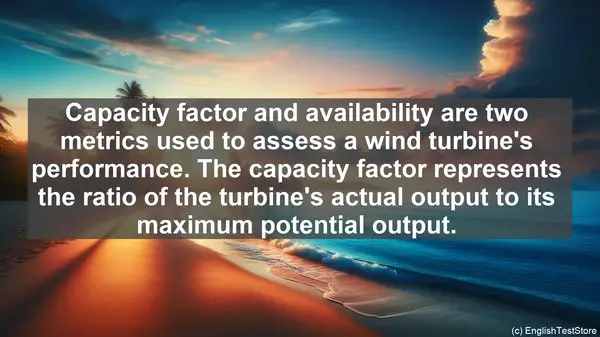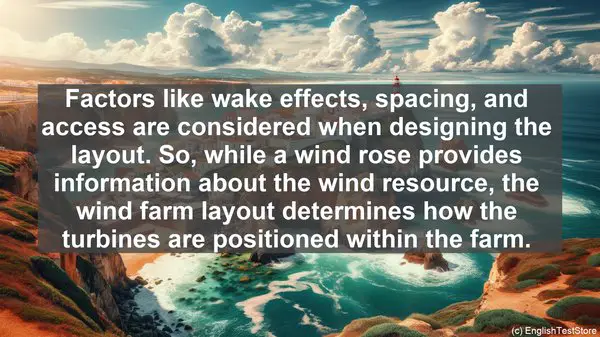Introduction
Welcome to our lesson on the top 10 commonly confused words in wind energy engineering. As students, it’s essential to have a strong grasp of the terminology used in our field. In this lesson, we’ll clarify some of the most frequently misunderstood words, ensuring that you’re well-equipped for your studies and future career. So, let’s get started!
1. Turbine vs. Generator
One of the most fundamental distinctions in wind energy engineering is between a turbine and a generator. While both are crucial components of a wind power system, they serve different purposes. A turbine converts the kinetic energy of the wind into mechanical energy, while a generator converts that mechanical energy into electrical energy. So, in simple terms, the turbine harnesses the wind’s power, and the generator converts it into usable electricity.
2. Pitch vs. Yaw
When we talk about wind turbine blades, two terms often come up: pitch and yaw. Pitch refers to the angle at which the blades are set. By adjusting the pitch, we can control the turbine’s rotational speed and optimize its performance. On the other hand, yaw refers to the movement of the entire turbine structure. It allows the turbine to align itself with the wind direction, ensuring maximum energy capture. So, while pitch relates to the blades’ angle, yaw relates to the turbine’s overall orientation.

3. Rotor vs. Nacelle
The rotor and the nacelle are two essential parts of a wind turbine. The rotor consists of the blades and the hub, which connects them. Its primary function is to capture the wind’s energy. The nacelle, on the other hand, houses the generator, gearbox, and other components. It’s often referred to as the ‘brain’ of the turbine, as it controls its operation and performance. So, in simple terms, the rotor captures the wind, and the nacelle converts that energy into electricity.
4. Anemometer vs. Wind Vane
When it comes to measuring wind, two devices are commonly used: anemometers and wind vanes. An anemometer measures the wind speed, providing crucial data for turbine performance analysis. On the other hand, a wind vane measures the wind direction, helping the turbine align itself through yaw adjustment. So, while anemometers give us the speed, wind vanes give us the direction.
5. Capacity Factor vs. Availability
Capacity factor and availability are two metrics used to assess a wind turbine’s performance. The capacity factor represents the ratio of the turbine’s actual output to its maximum potential output. It gives us an idea of how efficiently the turbine is generating electricity. Availability, on the other hand, measures the percentage of time the turbine is available for operation. It takes into account factors like maintenance and downtime. So, while capacity factor relates to output efficiency, availability relates to operational uptime.
6. Active Power vs. Reactive Power
In wind energy systems, we often encounter the terms active power and reactive power. Active power, also known as real power, is the power that is actually consumed and used to perform work. It’s the power that we measure in kilowatts or megawatts. On the other hand, reactive power is the power that is required to establish and maintain the magnetic fields in devices like transformers and motors. While reactive power is necessary for the operation of these devices, it doesn’t perform any useful work. So, active power is the power that we’re interested in when it comes to electricity consumption and generation.
7. Offshore vs. Onshore
When we talk about wind farms, we often refer to them as offshore or onshore. The distinction is simple: offshore wind farms are located in bodies of water, typically in the ocean, while onshore wind farms are situated on land. Each has its advantages and considerations. Offshore wind farms, for example, can take advantage of stronger and more consistent winds, but they also pose additional logistical and installation challenges. Onshore wind farms, on the other hand, are generally easier to set up and maintain but may have slightly lower wind speeds. So, the choice between offshore and onshore depends on various factors, including the project’s goals and constraints.
8. Siting vs. Zoning
When it comes to wind farm development, two terms that often come up are siting and zoning. Siting refers to the process of selecting the specific location for a wind farm. It involves considerations like wind resource assessment, environmental impact assessment, and community engagement. Zoning, on the other hand, refers to the division of land into different zones or areas with specific regulations. Zoning can help ensure that wind farms are appropriately placed, considering factors like noise, visual impact, and land use compatibility. So, while siting is about choosing the right location, zoning is about regulating land use.
9. Power Purchase Agreement (PPA) vs. Feed-in Tariff (FiT)
Power purchase agreements (PPAs) and feed-in tariffs (FiTs) are two mechanisms used to incentivize renewable energy generation. A power purchase agreement is a contract between an electricity buyer, often a utility, and a renewable energy generator. It guarantees the generator a certain price for the electricity produced over a specified period. A feed-in tariff, on the other hand, is a policy that sets a fixed payment rate for renewable energy fed into the grid. It’s typically set higher than the market rate to encourage renewable energy development. So, while a PPA is a contract between a buyer and a generator, a FiT is a policy that sets a payment rate.
10. Wind Rose vs. Wind Farm Layout
Two important aspects of wind resource assessment and wind farm design are the wind rose and the wind farm layout. A wind rose is a graphical representation of the wind’s direction and speed distribution at a specific location. It provides valuable insights into the wind resource’s characteristics, helping in turbine placement and orientation decisions. The wind farm layout, on the other hand, refers to the arrangement of turbines within a wind farm. Factors like wake effects, spacing, and access are considered when designing the layout. So, while a wind rose provides information about the wind resource, the wind farm layout determines how the turbines are positioned within the farm.

